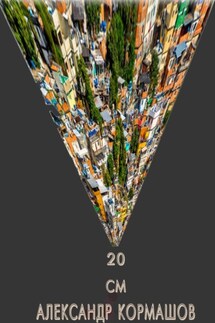The Zima Confession - страница 6
Suddenly Richard had an uneasy feeling. A feeling Mitchell had said something important to him he’d completely forgotten.
And then he remembered the email Mitchell had sent him two days ago. He had dismissed it as a jokey way of saying they had to go for a drink sometime. He read the words again with a feeling of déjà vu, or a feeling of having read them in a different life:
“Remember Helsinki? Have you made a decision yet? It’s getting urgent. Let’s arrange to meet soon.”
It was only at that moment, now that Mitchell was dead, in fact because Mitchell was dead, that the strangest idea began to insinuate itself. Back in Helsinki, Mitchell had said something to him that was not only very important but very secret. But no matter how he struggled, he couldn’t remember anything definite. Why can’t I remember the thing that I’m trying to remember?
Richard shook his head, trying to shake away the presence of the dream serpent, the shadows of grotesque unreality that still swarmed around him; trying to imagine what Mitchell could possibly have said to him that was so important. Something to do with Oldhams Bank, perhaps – or another project?
There was a more ominous possibility. The possibility that it was something to do with Zima. But that would be preposterous. Anything to do with Zima would have lit up in his consciousness like a neon sign. Where there should have been a memory there were just shadows.
So whatever this shadowy memory was, it couldn’t be Zima. He tried to think what else it could have been. There was one more possibility. The possibility that Mitchell had never said anything important to him in Helsinki. That, like the snake, it was imaginary. So, finally, unable to bring to mind any substantial notion of what Mitchell had said, he dismissed it as the memory of a dream. Richard switched off the laptop. He was annoyed though, that he’d read his emails just because a stupid snake dream had woken him. It was still only two a.m but now he wouldn’t get back to sleep.
6. Virtubank Software
The Bank of England, an ugly Georgian building consisting of an unfortunate hybrid of several incongruous elements, conceals the administrative machinery that once controlled an empire and continues to exert huge power over the global economy.
Walking near the building, along Threadneedle Street, you are aware of it only as a windowless Portland stone wall on top of which a disproportionately small Greek temple perches. From a greater distance, you would be able to see that the Greek temple has somehow been grafted to the front of something that looks like a French Hotel de Ville.
So, the Bank of England is ugly, but imposing. Fortunately though, the eye is somehow drawn away from it by other distractions. A statue of Wellington, on horseback, stands before the pleasant façade of the Royal Exchange building and, further down Cornhill, James Henry Greathead, 1844 -1896, forces traffic to bifurcate by occupying a position in the middle of the road on top of his stone pedestal.
In addition to Cornhill, six more streets scatter out at random angles from the intersection where the Bank of England is situated. They are surprisingly narrow – certainly not grand, continental boulevards such as those, for example, that radiate, in organised symmetry, from the Arc de Triomphe. They were not created for parading military might before cheering crowds. The might here is financial, not military, and so great is it that it must be concealed rather than paraded. Therefore, the streets are not (as Dick Whittington and his cat believed) literally paved with gold. Furthermore, the design is ramshackle and haphazard because they still mark out the positions where they were arbitrarily formed in medieval times.






